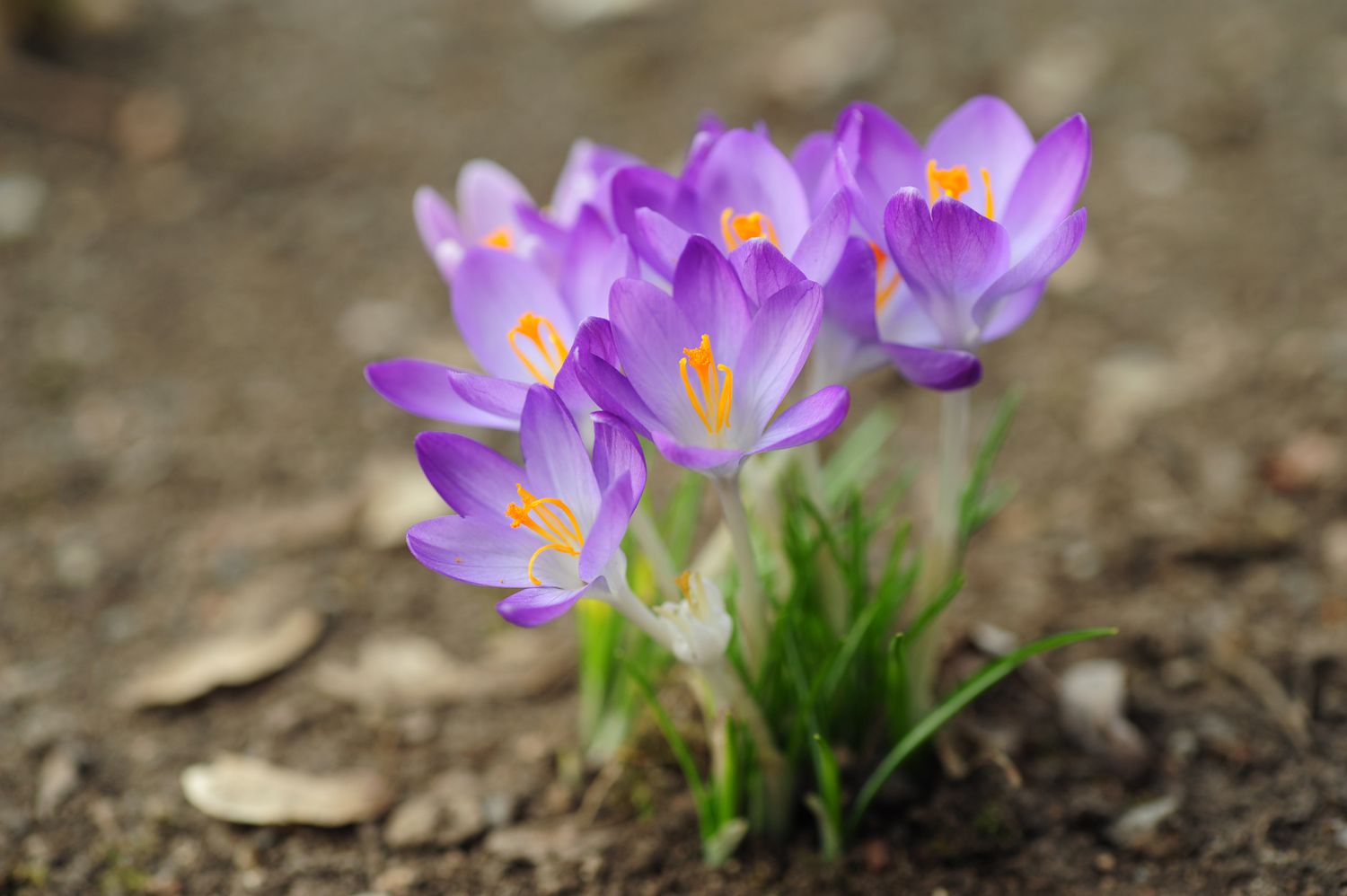
Crocus is a fascinating and beautiful flowering plant that belongs to the Iris family. Known for its vibrant colors and delicate petals, crocus is a favorite among gardeners and flower enthusiasts. While many people may be familiar with the basic characteristics of crocus, such as its ability to bloom early in the spring, there are several surprising facts about this plant that are lesser-known.
In this article, we will explore 14 surprising facts about crocus that will not only deepen your knowledge about this remarkable plant but also enhance your appreciation for its unique qualities. From its historical significance to its medicinal properties, we will uncover the hidden world of crocus and all that it has to offer. So, get ready to be amazed by the incredible world of crocus!
Key Takeaways:
- Crocus flowers, with their vibrant colors and early blooming nature, symbolize the arrival of spring and new beginnings, making them a favorite of bees and butterflies.
- The crocus is not only a beautiful flower but also a source of the highly prized saffron spice, known for its distinct flavor and color, making it a valuable addition to gardens and landscapes.
The crocus is one of the first flowers to bloom in spring.
As winter fades away and the days start getting warmer, the crocus is one of the first flowers to make its appearance, adding vibrant colors to the landscape.
Crocus flowers belong to the iris family.
Belonging to the Iridaceae family, the crocus is a close relative of the iris and shares similar characteristics with this beautiful flower.
There are over 80 different species of crocus.
With a wide variety of species, the crocus comes in different shapes, sizes, and colors, making it a versatile flower for gardens and landscapes.
Crocus flowers can bloom in shades of purple, yellow, and white.
From deep royal purples to bright sunny yellows, and pure white, crocus flowers offer a stunning array of colors in their blooms.
Crocus flowers are known for their distinct cup-shaped petals.
The petals of the crocus form a beautiful cup shape, adding elegance and uniqueness to its overall appearance.
Crocus bulbs are planted in the fall for spring blooms.
In order to enjoy the vibrant blooms of crocus flowers in spring, the bulbs are typically planted in the fall, allowing them to establish roots before the cold winter sets in.
Crocus flowers are often associated with new beginnings and rebirth.
Due to their early blooming nature, crocus flowers symbolize the arrival of spring and are often seen as a sign of renewal and new beginnings.
Crocus flowers are edible and have a mild, saffron-like flavor.
Certain species of crocus, such as Crocus sativus, produce saffron, a highly prized spice known for its distinct flavor and vibrant color.
Crocus flowers have been used in traditional medicine for centuries.
In various cultures, crocus flowers have been used for their medicinal properties, including treating digestive disorders, insomnia, and respiratory issues.
The saffron crocus is one of the most expensive spices in the world.
Due to the labor-intensive harvesting process (each flower only produces a few strands of saffron), saffron is considered a luxury spice, often fetching high prices in the market.
Crocus flowers are a favorite of bees and butterflies.
The bright colors and sweet nectar of crocus flowers attract pollinators like bees and butterflies, making them an important part of the ecosystem.
Crocus flowers are native to Europe, North Africa, and Asia.
These beautiful flowers are found naturally in regions such as the Mediterranean, the Middle East, and parts of Central Asia.
The crocus is a hardy plant that can tolerate cold temperatures.
These resilient flowers can withstand harsh winter conditions and are often seen popping up through the snow, signaling the arrival of spring.
The name “crocus” comes from the Greek word for “saffron.”
The name of this flower is derived from the Greek word “krokos,” which refers to the valuable saffron spice derived from certain crocus species.
So there you have it, The “14 Surprising Facts About Crocus.” From their early bloom to their association with saffron, these vibrant flowers bring joy and beauty to gardens worldwide.
Conclusion
After exploring these 14 surprising facts about crocus, it is clear that this petite and vibrant flower possesses a range of intriguing qualities. From its rich historical and cultural significance to its ability to bloom during the chilly winter months, the crocus is truly a remarkable plant.
Whether you admire these flowers for their stunning colors, enjoy their delicate fragrance, or appreciate their resilience in adverse weather conditions, one thing is certain – crocuses are a delight to behold. So next time you come across these charming blooms, take a moment to appreciate the beauty and uniqueness of the crocus.
FAQs
1. Are crocuses the same as saffron?
No, crocuses and saffron are not the same. While saffron is derived from the saffron crocus (Crocus sativus), there are many different species of crocus, each with its own unique characteristics.
2. Can I grow crocuses in containers?
Yes, crocuses can be successfully grown in containers. Use well-draining soil and ensure that the containers have drainage holes. Place the containers in a sunny location and water them consistently during the growing season.
3. How long do crocuses bloom?
The blooming period of crocuses varies depending on the species and growing conditions. Generally, crocuses bloom for about 2-4 weeks, starting in late winter or early spring.
4. Do crocuses multiply?
Yes, crocuses can multiply and form clumps over time. This natural multiplication process allows them to spread and create a larger display of flowers in your garden.
5. Do crocuses attract bees and butterflies?
Yes, crocuses are known to attract bees and butterflies with their colorful petals and nectar. They provide an important food source for these pollinators, especially in early spring when other flowers may still be scarce.
Crocus enthusiasts, your journey doesn't end here! Delve deeper into the captivating world of these spring beauties with our enticing articles. Uncover the mindblowing facts about autumn crocus, a lesser-known relative that holds its own surprises. Explore the intriguing aspects of crocus that will leave you craving more knowledge. Finally, prepare to be amazed by the unbelievable facts surrounding colchicum, a flower that masquerades as a crocus but hides fascinating secrets. Click below to continue your adventure and unravel the mysteries of these enchanting blooms!
Was this page helpful?
Our commitment to delivering trustworthy and engaging content is at the heart of what we do. Each fact on our site is contributed by real users like you, bringing a wealth of diverse insights and information. To ensure the highest standards of accuracy and reliability, our dedicated editors meticulously review each submission. This process guarantees that the facts we share are not only fascinating but also credible. Trust in our commitment to quality and authenticity as you explore and learn with us.


